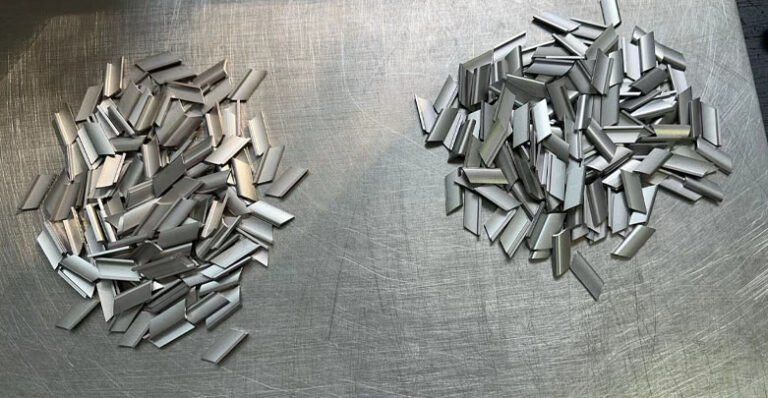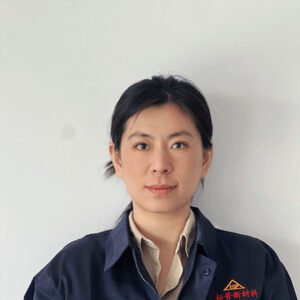Steam turbines are core power equipment, and their stable and efficient performance is directly related to power plants’ operating efficiency and economic benefits. As a critical energy conversion component, selecting, designing, and optimizing materials for steam turbine shields are even more crucial. Erosion shields must withstand high temperature and high pressure, high-speed rotation, and complex flow fields and have good corrosion resistance, fatigue resistance, and sufficient strength to ensure stable operation in harsh working environments. This article will start with common problems and solutions for shields and material selection and briefly explain the selection and optimization of steam turbine shields.
What are steam turbines?
Steam turbines are critical power equipment in thermal power plants. They drive generators to rotate and generate electricity by expanding high-temperature and high-pressure steam. It is an essential bridge for efficiently converting the thermal energy of steam into mechanical energy, which directly determines power plants’ energy conversion efficiency and operation stability.
Steam turbines are composed of complex rotating parts and fixed parts. The rotating part mainly includes the main shaft, impeller, and shields, which combine to convert the linear steam into rotational motion. The fixed part contains cylinders, nozzles, steam seals, partitions, etc., which provide the necessary channels and conditions for the flow of steam and energy conversion.
Importance of steam turbine shields
Core conversion components: Steam turbine shields are the core components in the energy conversion process. Their shape, material, and performance directly determine the efficiency and quality of steam energy conversion into mechanical energy.
Complex working environment: The shields work in a harsh climate. They have to withstand the impact of high-temperature and high-pressure steam and face the erosion of impurities, moisture, and corrosive substances in the steam. In addition, the shields also need to withstand the centrifugal force and vibration generated by high-speed rotation. These factors significantly demand the shields’ material, structure, and manufacturing process.
What is the common problem of steam turbines?
Common problems with steam turbine shields include damage and breakage, corrosion and rust, and water erosion. These problems affect the steam turbine’s operation and may seriously impact equipment safety and production operations. Therefore, during the design, manufacturing, installation, operation, and maintenance of steam turbines, a series of measures need to be taken to prevent and deal with these problems to ensure the safe and stable operation of the steam turbine.
Analysis of the Causes of blade corrosion and erosion.
4.1 Acid corrosion: In the initial condensation area of the low-pressure cylinder, acidic substances in the steam (such as carbon dioxide, sulfur dioxide, etc.) are enriched in the condensate, resulting in a decrease in pH value and eroding the metal parts. This corrosion reduces the strength and life of the erosion shields and affects the overall performance and safety of the unit.
4.2 Oxygen corrosion: Dissolved oxygen is one of the critical factors that cause oxygen corrosion. When the protective film on the blade’s surface (such as the iron oxide film) is damaged, dissolved oxygen will react electrochemically with the metal matrix, resulting in the precipitation of iron ions and corrosion of the material. In addition, factors such as pH value, temperature, load, and flow rate will also affect the rate and degree of oxygen corrosion.
4.3 Water erosion: Under low-load conditions, liquid water droplets in the steam flow will hit the blade’s surface, causing water erosion. Water erosion not only destroys the surface structure of the blade but also reduces its wear resistance, thereby accelerating the damage process.
Advantages of cobalt alloy
5.1 High-temperature strength and oxidation resistance
Cobalt alloys exhibit excellent strength and oxidation resistance in high-temperature environments. This property enables cobalt alloy erosion shields to withstand high temperatures and high-pressure steam shock in steam turbines without deformation or damage. This advantage is crucial to improving steam turbines’ efficiency and operating stability.
5.2 Corrosion resistance and fatigue resistance
Cobalt alloys have good corrosion resistance and fatigue resistance. In the harsh working environment of steam turbine shields, cobalt alloys can effectively resist the erosion of corrosive substances in steam and extend the service life of shields. At the same time, its high fatigue resistance ensures that the shields maintain stable performance during long-term, high-load operation.
5.3 Excellent welding performance
Cobalt alloys have good welding performance, which makes it easy to use welding technology during the manufacture and repair of shields. The strength and sealing of the welded joints can be guaranteed, thereby improving the erosion shields’ overall performance and service life.
5.4 Wear resistance
Cobalt alloys also have excellent wear resistance. During the operation of steam turbine shields, they need to withstand the scouring and wear of impurities and particles in the steam flow. The high wear resistance of cobalt alloys can reduce the wear on the shields and extend their service life.
Specific application of cobalt alloy in turbine shields
6.1 Blade material: Cobalt alloy can be directly used as the manufacturing material of turbine shields and bushings, especially for manufacturing erosion shields in high temperature, high pressure, and high corrosion environments. Cobalt alloy erosion shields with complex shapes and high precision can be manufactured through precision casting, forging, CNC machining, and other processes.
The solid cobalt alloy plates or strips are induction brazed to SUS410Cb steam turbine shields to improve shields’ wear and erosion resistance. Erosion strips are typically made from Co 6 and Co 6B.
6.2 Coating material: Besides being used as a solid blade, cobalt alloy can also be used as a coating material on the surface of turbine shields. Coating a cobalt alloy layer on the blade’s surface will improve its wear and corrosion resistance and extend its service life. This coating technology has been successfully applied in many power plants.
STP 6 Chemical Compositions
C: 0.9-1.4%, Mn: ≤1.0%, Si: ≤1.5%, Cr: 27.0-31.0%, Ni: ≤3.0%, Mo: ≤1.5%, W: 3.5-5.5%, Co: Bal.
Density: ≥8.35g/cm3
Hardness: 38-44HRC
STP 6B Chemical Compositions
C: 0.9-1.4%, Mn: ≤2.0%, Si: ≤2.0%, Cr: 28.0-32.0%, Ni: ≤3.0%, Mo: ≤1.5%, W: 3.5-5.5%, Co: Bal.
Density: ≥8.38g/cm3
Hardness: 36-40HRC
Principles for selecting turbine shields
7.1 Material selection: According to the working environment characteristics of the erosion shields, select materials with excellent corrosion and wear resistance. For example, induction brazing of cobalt alloy strips to SUS410Cb shields can significantly improve the wear and erosion resistance of the shields. At the same time, factors such as the material’s strength, toughness, thermal stability, and processing performance need to be considered.
7.2 Structural design: Optimize the shape and size of the shields to reduce stress concentration and vibration. The shields’ aerodynamic performance and fatigue resistance can be improved through reasonable streamlined design and thickness distribution. In addition, factors such as the connection and fastening methods between the shields and the wheel disc need to be considered.
7.3 Manufacturing process: Use advanced manufacturing processes and technical means to ensure the manufacturing accuracy and quality of the erosion shields. For example, precision casting, forging, or CNC machining can manufacture shields with complex shapes and high precision. At the same time, it is also necessary to strengthen quality inspection and control links to ensure that each blade meets the design requirements and usage standards.
Blade maintenance and optimization strategy
8.1 Regular inspection and maintenance: Establish a regular inspection and maintenance system to comprehensively evaluate the erosion shields. Timely discovery and dealing with problems such as salt accumulation, dirt, and damage on the blade surface to prevent the problem from expanding. At the same time, it is also necessary to record and analyze the wear and corrosion of the erosion shields to provide a reference for subsequent maintenance and replacement work.
8.2 Operation management: Optimize the unit’s operating conditions and parameter settings to reduce the low-load operation time and frequency. Reduce the shields’ corrosion and wear risk through reasonable load distribution and adjustment methods. At the same time, it is also necessary to strengthen the monitoring and diagnosis of the unit to discover and deal with abnormal situations promptly.
8.3 Technological innovation: Actively introduce and apply new materials, new technologies, and new process methods to continuously improve the wear resistance, corrosion resistance, and manufacturing quality of the erosion shields. For example, new materials with higher corrosion resistance and wear resistance can be developed, or advanced surface treatment technologies (such as spraying, plating, etc.) can be used to improve the protective performance of the erosion shields; digital technology and intelligent means can also be used to achieve real-time monitoring and early warning of the blade status.
As a critical component in a power plant, the material selection of steam turbine shields is crucial to ensuring power generation efficiency and unit safety. Cobalt alloys stand out among steam turbine blade materials for their excellent high-temperature strength, oxidation resistance, corrosion resistance, fatigue resistance, good plasticity and toughness, excellent welding performance, and high wear resistance. By using high-quality materials such as cobalt alloys, advanced manufacturing processes, and operation management strategies, the performance and service life of the shields are improved, and a solid foundation for the long-term stable operation and efficient power generation of power plants is laid out. Therefore, when you choose the material for steam turbine shields, it is better to consider the advantages of cobalt alloys to maximize power generation efficiency and unit safety.


